Slight differences between two less-common fire sprinkler types give designers and installers much-needed flexibility
There are plenty of good reasons why most fire sprinklers are mounted in pipes above or just below ceilings, including:
- Fire sprinklers are heat-activated, and heat rises
- Higher sprinklers can cover wider areas
- For the most part, heads placed near the ceiling face fewer obstructions (like furniture, cabinets, and other large objects) that might get in the way
But there are also good reasons to mount sprinklers along walls—and plenty of ways to do it, too, thanks to the sidewall sprinkler head. In this article, we look at what these fire sprinklers do and how horizontal and vertical models play slightly different roles in active fire protection.
Not interested in the finer points of sidewall sprinkler heads? Browse our full selection of sidewall sprinklers.
Sidewall sprinkler heads go where pendent and upright sprinklers can’t (or shouldn’t)
We’ve explained much of what separates one kind of fire sprinkler head from another in our in-depth look at fire sprinkler head types. But basically, each sprinkler is designed to point in a direction. Pendent sprinklers (the most common type) point downward and to the sides from a ceiling or beam. Horizontal sidewall sprinklers, on the other hand, install horizontally, often in a wall. They may or may not stick out, depending on the sprinkler’s construction and the way it’s mounted, but each of these heads relies on piping along or behind a wall for a supply of water.
There are two big reasons to use sidewall sprinklers:
- Access to ceiling piping is limited or unavailable
- Ceiling-mounted sprinkler heads would somehow detract from the building’s aesthetics
By and large, most sidewall sprinkler heads are horizontal sidewall sprinklers. They’re designed to point parallel to the floor.
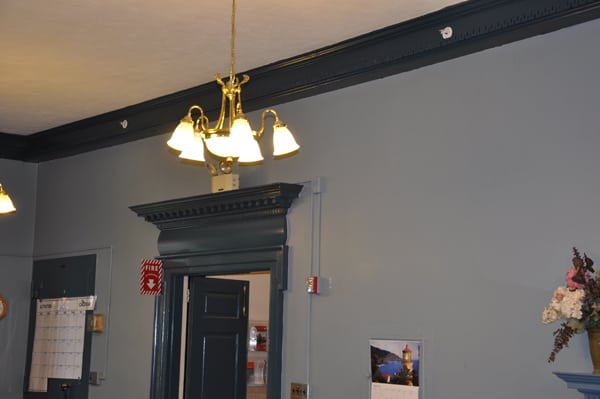
However, most sprinkler manufacturers also offer vertical sidewall sprinklers. These heads point perpendicular to the floor and can be installed either facing up (a classic upright orientation) or down (a classic pendent orientation). That flexibility makes them unusual. Upright and pendent sprinklers, for example, can face only one way—and will likely fail to keep a fire in check if installers choose the wrong orientation.
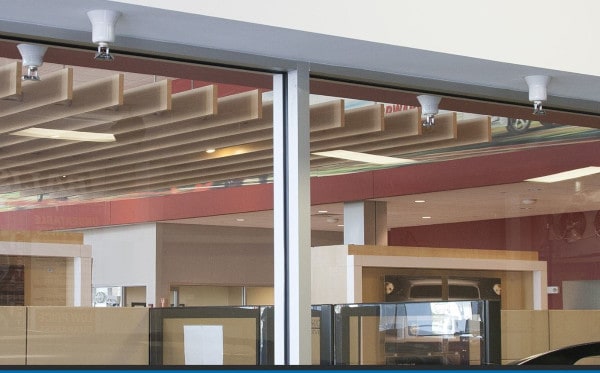
A short sidewall case study: apartment fire protection
For a great example of when these sprinklers do what others can’t, let’s watch one in action:
This isn’t a typical use, as sidewalls are usually indoors. Residential buildings like hotels use the lion’s share of sidewall sprinklers, and they’re also common in dining rooms, offices, and other spaces where running overhead pipe is impractical or ceiling aesthetics are a high priority.
But the design in the video—which features a horizontal sidewall head placed beneath an outdoor walkway on an apartment complex—embodies many of the benefits offered by sidewall heads. Neither upright nor pendent sprinklers make much sense here, for several reasons:
- Running pipe for pendent sprinklers in the outside wooden deck is impractical.
- This configuration connects an outdoor sprinkler to protected, climate-controlled indoor pipes, reducing the risks of vandalism, impact, and freezing.
- The sidewall is used “For the protection of exterior projections and similar structures,” one of NFPA 13’s nine permitted use cases.
Sidewall sprinklers do have certain limits (as we’ll see in the next section). Still, as an alternative to pendent or upright heads, they support designs that work where other orientations wouldn’t.
Vertical and horizontal sidewall sprinkler models look similar but are easily distinguished by their deflectors
To tell a sidewall sprinkler head from another type, look at the deflector. These small plates rest between the sprinkler’s orifice and the space it protects, shaping the water pattern as it sprays. While most (upright and pendent) sprinklers have a spoked circle, sidewall heads have a deflector that usually combines a semicircle and a flat plate that runs perpendicular to it. That shape guides water away from one direction and toward the intended direction.
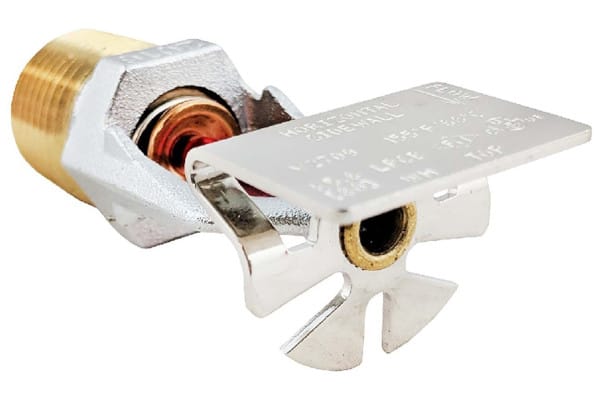
The deflector holds the key to telling these sprinklers apart—and to installing them properly. Horizontal models are marked with the word “top,” indicating the side of the deflector that should face the ceiling. In contrast, vertical models feature an arrow and the word “flow.”
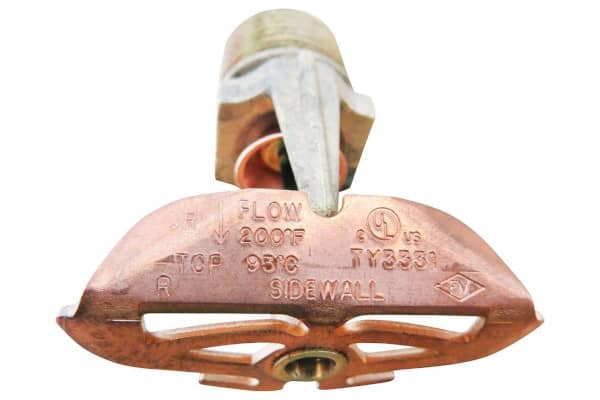
Horizontal and vertical models have slightly different installation requirements
In 1996, professor and fire protection engineer Glenn Corbett described sidewalls—with more than a trace of irony—as “superhuman” sprinkler heads. His article for Fire Engineering drew attention to a concerning trend in fire protection to install sidewall sprinklers in ways that simply weren’t safe. Installers, he said, often overestimated their abilities, placing them too close to obstacles or otherwise putting them in places that don’t work.
That’s a big problem, and for a simple reason: like other fire sprinkler types, sidewall heads activate when they get hot. But tests have shown that some parts of buildings—particularly, those where a wall and ceiling meet—manage to lock cooler pockets of air in place. This phenomenon, called “dead air,” can cause heads to start spraying too late, allowing a fire to spread.
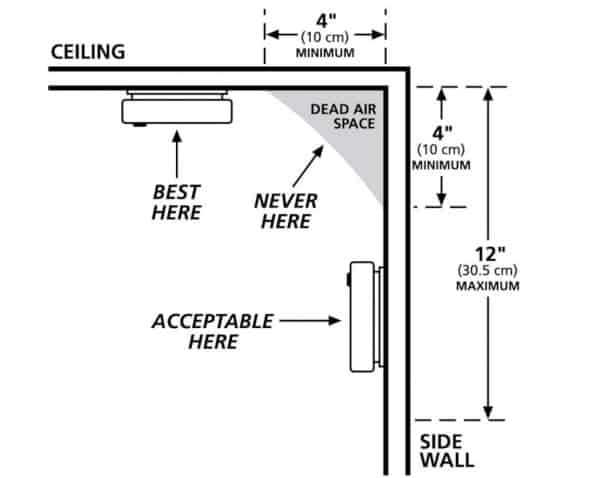
As such, sidewalls and other heads need clearance from dead air. The 2022 edition of NFPA 13: Standard for the Installation of Sprinkler Systems requires the following clearances for vertical and horizontal sidewall sprinklers:
- At least four inches of clearance between deflectors and ceilings or end walls for all models
- No more than six inches of clearance from the ceiling for vertical sidewall models only
- No more than 18 inches of ceiling clearance for horizontal sidewall models specifically listed for that use, when placed below non-combustible and limited-combustible ceilings
- No more than six inches of ceiling clearance for all other horizontal-type models
NFPA 13 also prescribes a minimum distance from the deflector to the wall where the sprinkler is installed:
- Vertical models: four to six inches
- Horizontal models: zero to six inches
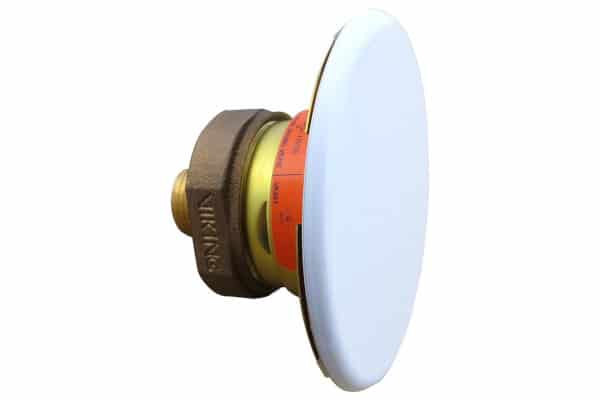
With globally recognized manufacturers competing for a share of the fire protection market, sidewall sprinkler purchasers have a wide array of options
Sidewall sprinklers open up design possibilities in a wide variety of buildings. They’re certainly not “superhuman”—but they’re an impressive and helpful addition to any designer’s toolkit.
QRFS carries more than 40 sidewall sprinkler models from industry-leading manufacturers Victaulic, Viking, Senju Sprinkler, and Tyco. With a variety of temperatures, finishes, and orifice sizes for residential and commercial heads—both quick and standard response—our selection has sprinkler heads suited to almost any project.
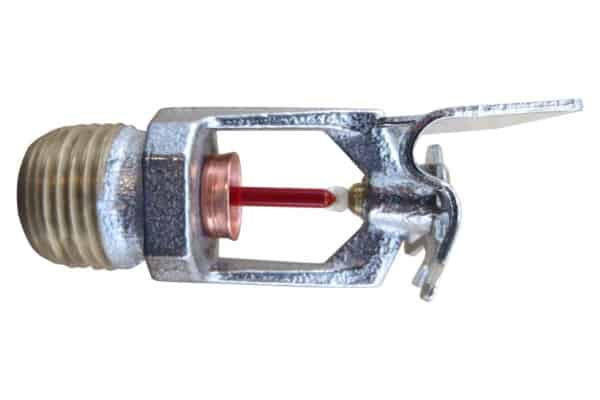
All of our residential models are UL-listed and ready for installation in NFPA 13D and 13R fire sprinkler systems. Each of our commercial models is UL-listed, FM-approved, and ready for installation in NFPA 13-compliant systems.
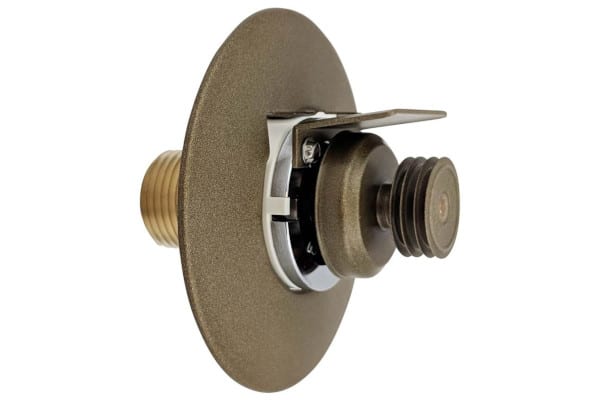
Browse our selection of sidewall sprinklers.
Questions about sidewall sprinklers? Call us at +1 (888) 361-6662 or email support@qrfs.com.
This blog was originally posted at blog.qrfs.com. If this article answered your questions about these useful heads, check us out at Facebook.com/QuickResponseFireSupply or on Twitter @QuickResponseFS.


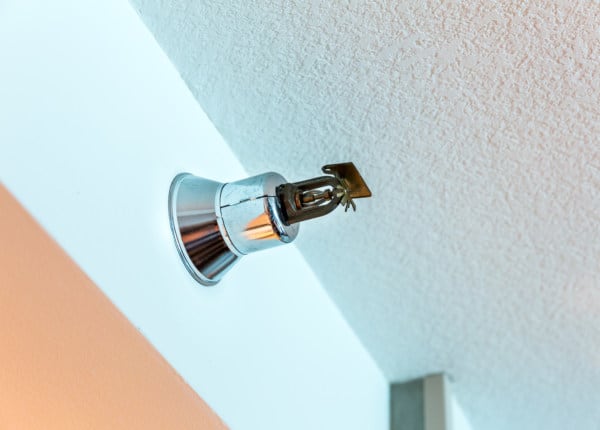
What does it mean when all the sprinklers are giving a tweet separately every 30 seconds?
Mary — Honestly, we aren’t sure what you are referring to. Most fire sprinklers have mechanical, heat-activated triggers. What you are referring to sounds like a smoke or heat alarm or detector, or some other portion of an alarm system. You should contact the device manufacturer or a fire protection professional in your area to get to the bottom of the issue.
Hi!
is there a requirement to mount the sidewall sprinklers perpendicular to the wall behind ?
Is it possible to install the sidewall sprinklers at 45deg or 30deg angle to the wall behind to utilize longer coverage in narrow areas?
For an 8m x 2m residential balcony, can I position two sidewall sprinkler heads in the corners at the building wall 8m apart, pointing towards the centre of the balcony? Proposed sprinklers are listed for 4.3 x. 4.3 m coverage.
Thanks in advance for your help!
We can’t provide specific design or coverage guidance in this format, but you can try our Ask a Fire Pro service. Provide details about your building and system, and an experience professional will provide a well-researched answer to your question based on applicable codes, standards, and system applications.
Hi! Can I put a built-in cabinet surrounding the sprinkler (and keeping the space open on where the sprinkler is)? Is there a minimum space requirement from the sprinkler deflector to the cabinets?
There are minimum distances between sprinklers and objects, including walls, and various obstruction rules that can get fairly complex (this blog can give you an idea of the complexity). Thus, we would not feel comfortable commenting on your specific situation. You should contact a qualified fire sprinkler pro in your area and run the situation (including providing measurements) by them to assess what you want to do. Thanks for reading.
Is it typical for sidewall sprinklers to remain extended – meaning, not be capped and flush with the wall? Have a client that just purchased a home with both vertical and sidewall sprinklers. The vertical / ceiling mounted sprinklers are all capped and flush with the ceiling. However, wherever there are sidewall mounted sprinklers, those are fully exposed.
Jason — To answer your question, we’d need to first try to clear up some common terminology. Sprinkler “caps” usually refer to small pieces of plastic that sit on newly shipped sprinklers to protect sensitive parts. What we think you may mean are sprinkler cover plates for concealed sprinklers. Concealed sidewall sprinklers sit inside of a finished wall and concealed pendents sit inside of a finished ceiling, and all you see is a small round disc (or square); the cover plate.
Assuming this is what you are referring to, it sounds like the ceiling sprinklers are concealed sprinklers (totally hidden), while the sidewalls are exposed and surrounded by escutcheons. Regarding whether this is typical—well, it’s possible and not abnormal, though there are also concealed sidewalls that would provide an option to make wall sprinklers look just like the pendents in the ceiling.
However, it might depend on the installation situation. For example, perhaps there wasn’t enough room in the walls to allow for a concealed sidewall. In any case, it’s not necessarily ‘wrong’ to have a mix of these sprinkler types. Hope that helps!
What are the specific differences between vertical sidewall and special window models? Uniformity?
Colleen — This Sprinkler Age article covers window sprinklers and explains a great deal, but here is a key distinction: “Window sprinklers can be a horizontal sidewall or a pendant vertical sidewall.”
Does anyone know? Nothing in codes or standards specifically addresses this.
What would be a minimum width of a wall to mount a horizontal sidewall sprinkler. Like 6″ or 8″ wide to collect enough heat to activate the sprinkler?
Robert — This is an interesting question. We asked an NFPA committee member, and he was not specifically aware of ‘wall-width’ requirements for sidewalls based on heat collection in NFPA 13. He mentioned the maximum vertical deflector distance sections in Ch. 9 and Ch. 11, and sections that reference horizontal deflector distance from the wall. Of course, the rules for maximum and minimum distances between sidewalls in the design area would still be relevant. Unfortunately, we can’t provide a definitive answer. It’s an interesting question, however, and we’ll look into it and perhaps address any findings in a future blog.Thanks for reading!
Is it acceptable to install a vertical sidewall sprinkler ceiling mounted in a commercial kitchen to prevent water entering fry vats; i.e. restricting flow in the direction of the vats?
Neil — Unfortunately, this is a highly specific design question that we can’t answer in this forum (and a scenario we haven’t considered!). For an authoritative answer, your best bet is to contact a qualified local fire protection “design professional in responsible charge” and run the specific scenario by them. We can also run the scenario by a qualified AHJ through our Ask a Fire Pro service and get an informal opinion, as we can ask for more information about the specific situation and conduct some research. Thanks for reading!
I would like to prevent birds from building a nest directly above our outdoor, wall-mounted horizontal fire sprinklers. To eliminate this condition, is it acceptable to install a bird nest blocker directly ABOVE the horizontal fire sprinklers? It appears the main concern is blocking the vertical area below the sprinkler, not the area immediately above it. Also, NFPA 13 (or other city fire code) does not seem to address this situation. Help appreciated! Thank you.
Jonathan — That is a good question. If you are referencing a horizontal sidewall sprinkler, the spray pattern should be outward (horizontally) and downward, so a bird nest blocker above the sprinkler, if it is far enough away, wouldn’t necessarily block the spray pattern. However, it could impact heat collection, again depending on the distance and dimensions (though not necessarily negatively).
Your best bet is to run this scenario by a local fire protection pro who can look at your system and sprinklers, plus the dimensions and placement of what you are looking to install. A pro who is well-versed in NFPA 13’s obstruction and spacing rules will be able to provide a specific course of action.